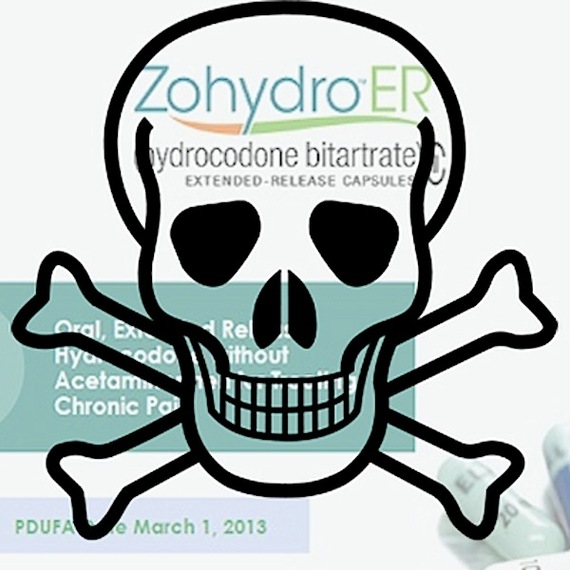As a chronic pain patient, a misdirected crusade against opioids has significantly added to my suffering. I'm even afraid to ask my doctor about taking Zohydro. Let's go with the science, not the scare tactics.
People with addiction may use opioids to escape from life, but pain patients use them to participate in life.
My chronic pain from Ehlers-Danlos Syndrome is invisible. I appear athletic and competent, but my body has been falling apart for decades. EDS is due to a genetic defect that impairs the production of collagen, leaving defective connective tissue that isn't sturdy enough to do its job. Since all tissues of our bodies (even bones) are made with or held together by connective tissue, EDS can impair all body parts. There is no cure; only the symptoms can be treated.
The pain arises from small joint and tissue injuries that become cumulative. Of course doctors were skeptical when I came to them with just descriptions of my pain -- because soft tissues don't show up well on standard medical scans, the findings were always unremarkable.
Before my pain became chronic and overwhelming, I was an endurance athlete, so I was tough and no stranger to normal pain. With EDS it's different: more pervasive, persistent, disabling and totally out of my control. No one without chronic pain should presume to understand what it's like to live with it and make judgments on how much suffering a person should endure.
Since 1995, I've been managing my pain with opioids: extended-release OxyContin (oxycodone) to lower the volume of the constant background pain and intermittent Vicodin/Norco (hydrocodone) for "breakthrough" pain, fluctuations or incidents of more intense pain. I, and the many others like me, am evidence that long-term opioid therapy definitely works.
Last fall, the FDA approved a new opioid painkiller, Zohydro -- an extended-release hydrocodone medication intended for chronic pain patients who can't use other long-acting opioids like OxyContin. The problem with other hydrocodone formulations, like Vicodin and Norco, is that they contain acetaminophen (Tylenol), which has been found to cause liver damage with the prolonged high doses needed for chronic pain control. In addition, they are all instant-release, lasting only four to six hours and therefore requiring multiple doses daily. Zohydro addresses these issues: There is no acetaminophen and the timed-release capsule lasts up to 12 hours.
Zohydro would be a good alternative to the OxyContin I currently take because hydrocodone seems to provide me better pain relief than oxycodone. I could use long-acting Zohydro for my consistent pain and immediate-acting Vicodin for pain flares, but I'm afraid to even ask my doctor. I don't want to make any changes to my opioid regimen that could draw attention to me. Questions about Zohydro could arouse suspicions of "drug-seeking."
This absurd situation is the result of an anti-opioid hysteria whipped up by the media and self-proclaimed drug warriors. Advocacy organizations, fueled by the righteous anger of former addicts and parents whose children have overdosed, have launched a misdirected campaign against this new drug, spreading alarm that a second "Oxy epidemic" is in the making. A complex medical issue has been turned into a dramatic legislative circus, with some governors catering to their frightened constituents by trying to block Zohydro sales in their states. Attorneys general in more than half the states are joining the drug warriors to demand that the FDA withdraw its approval. They are asking for a legal change based not on scientific evidence but on the mere possibility that the drug might be misused. That's a scary precedent.
I'm incredulous at how many people, even doctors, believe that addiction is an inevitable consequence of opioid therapy. This is simply not true. These are the facts: Only one-third of people find opioids pleasurable; less than a quarter of those who take opioids recreationally get addicted; and a mere 1 percent or 2 percent get addicted when opioids are taken for pain.
Unfortunately, the current panic has obscured these facts. Now, almost anyone with the slightest experience with drugs and addiction can sell themselves as an "expert." The media trot out a senator or advocate or parent to tell horrifying stories of addiction and pontificate on the evils of opioids. Scientific standards, pain-medicine expertise and the voices of pain patients do not apply. The negative stereotype of anyone taking opioids explains why legitimate patients don't stand up to be counted, but hide and remain silent.
I have relied on opioids for the last 19 years while waiting for a cure that never materialized. I've tried counseling, physical therapy, over a dozen different medical specialists and their medications, pain workshops and alternative treatments (ayurvedic, chiropractor, acupuncture, yoga, Pilates, massage, biofeedback, meditation). None of them kept my pain from becoming disabling.
Singling out Zohydro for special treatment will not stem the tide of addiction. Addiction is in the person, not the drug, and desperate addicts will simply find some other opioid, like heroin, to feed their craving. We pain patients don't have that option.
This is an abbreviated version of an article written by Angelika Byczkowski. Her essays have been published in several healthcare blogs, including Stanford's Scope, Kevin MD and Occupy Healthcare. Her blog is here.
Read the full version of this article at Substance.com.
Need help with substance abuse or mental health issues? In the U.S., call 800-662-HELP (4357) for the SAMHSA National Helpline.
